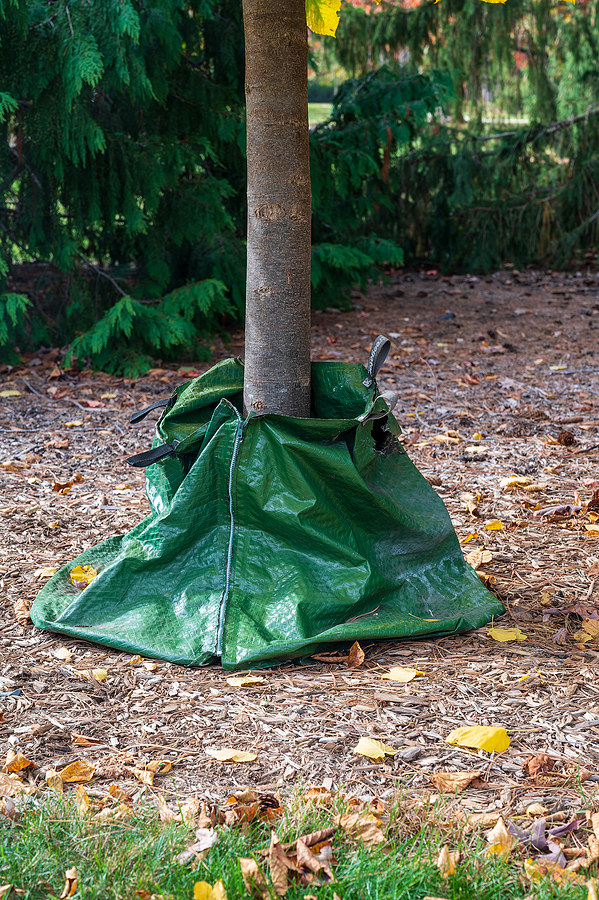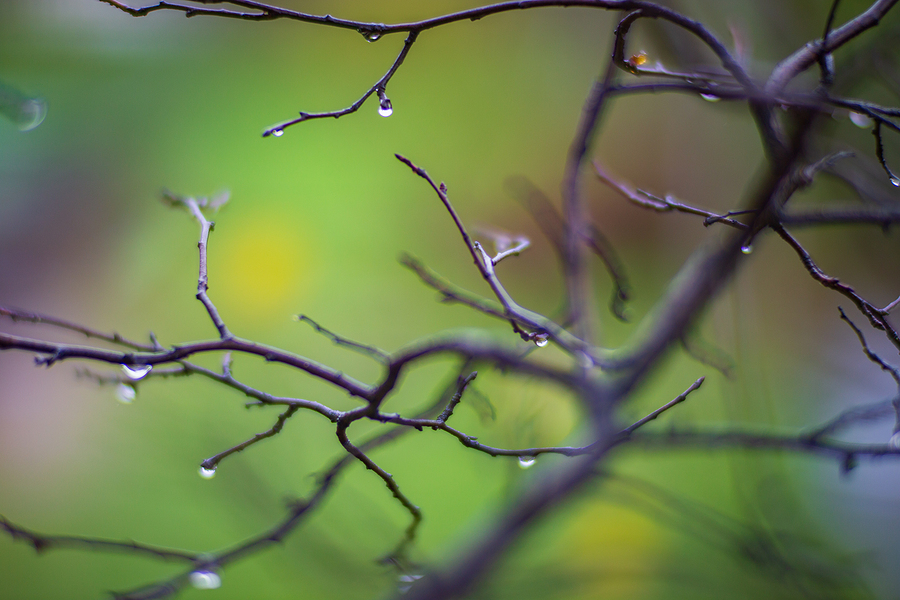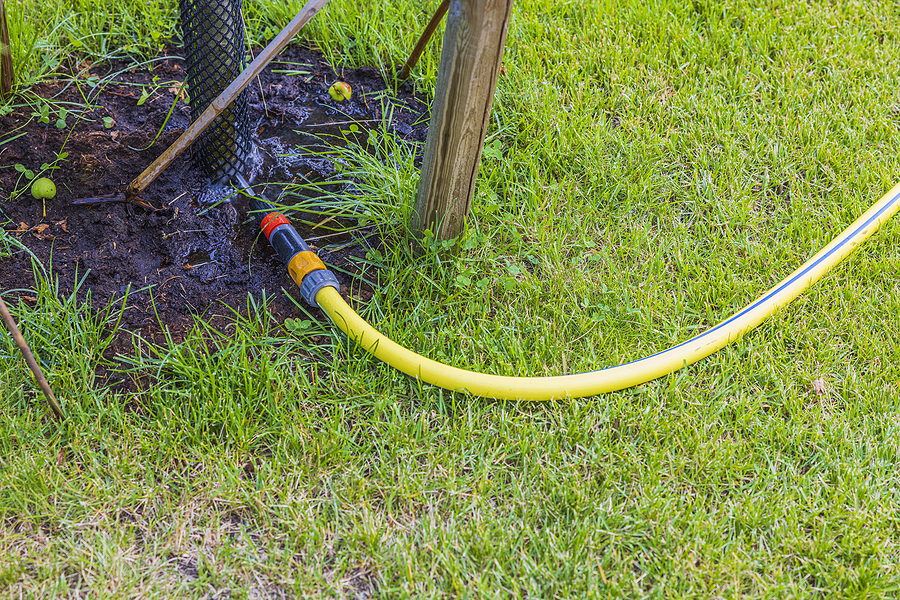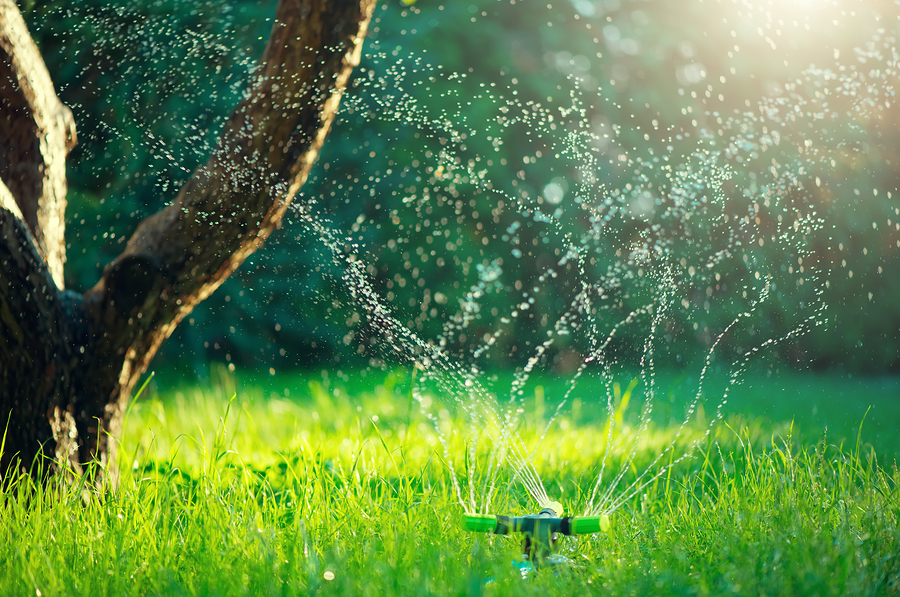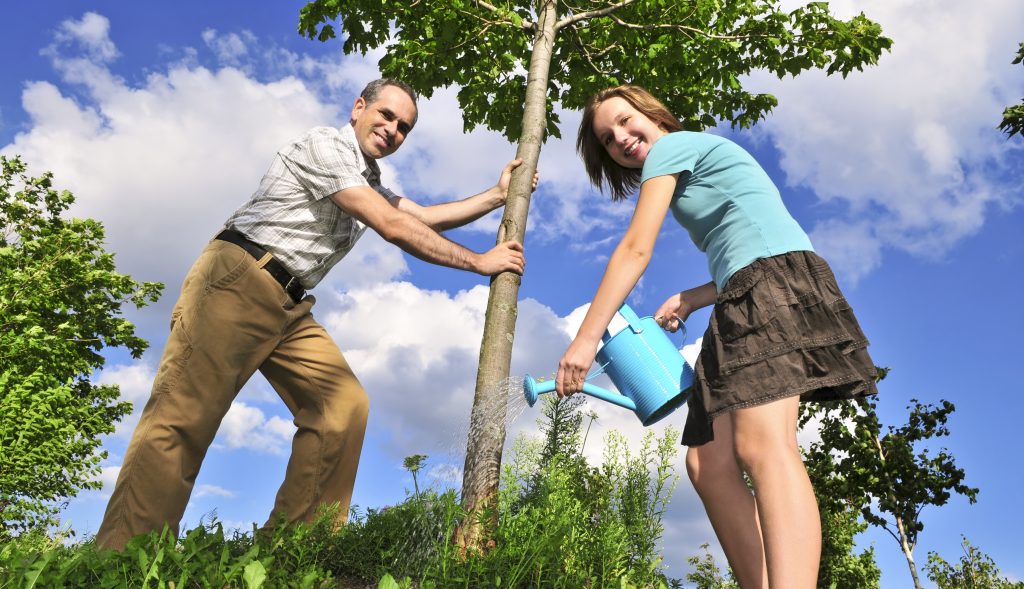Summer brings warmth and sunshine, but it also presents unique challenges for maintaining healthy trees. When temperatures soar and rainfall becomes unpredictable, your trees face significant stress that can lead to serious health issues. Understanding how to properly hydrate your trees during these demanding months is crucial for preserving their beauty and longevity.
Trees are remarkable organisms that provide shade, beauty, and environmental benefits to our landscapes. However, they depend on consistent moisture to perform their vital functions. During summer months, trees lose water rapidly through their leaves while simultaneously working harder to cool themselves and transport nutrients throughout their structure.
This comprehensive guide will explore effective methods and products to keep your trees properly hydrated throughout the summer season. From innovative watering systems to soil amendments, you’ll discover practical solutions that ensure your trees thrive despite challenging weather conditions.

Understanding Summer Stress on Trees
Summer heat creates a perfect storm of conditions that challenge tree health. When temperatures rise, trees accelerate their transpiration process—essentially sweating through their leaves to cool down. This natural cooling mechanism requires substantial amounts of water, often more than what’s available through natural rainfall or standard watering practices.
The impact of inadequate tree hydration extends far beyond simple wilting. Trees experiencing water stress become vulnerable to pest infestations, disease, and structural damage. Their root systems may struggle to absorb nutrients effectively, leading to yellowing leaves, premature leaf drop, and stunted growth.
Indiana’s climate presents particular challenges for tree maintenance. The state’s sudden temperature fluctuations can catch trees off guard, especially when hot spells follow cooler periods. These rapid changes stress tree systems and increase their water demands significantly.
Heat stress manifests in various ways throughout different tree species. Oak trees, common throughout Indiana, may develop leaf scorch—brown, crispy edges on leaves that indicate insufficient moisture. Maple trees might display wilting or drooping branches, while Birch trees often show yellowing leaves starting from the bottom of the canopy.
Effective Tree Hydration Methods
Water Bags: Slow and Steady Wins the Race
Tree watering bags represent one of the most efficient methods for maintaining consistent tree hydration. These innovative products deliver water slowly and directly to the root zone, ensuring deep penetration without waste.
Quality tree watering bags are constructed from heavy-duty PVC material designed to withstand harsh weather conditions. Their slow-release system typically holds 15-20 gallons of water, providing sustained moisture over several hours. The UV-resistant construction ensures these bags maintain their integrity throughout multiple seasons of use.
The primary advantage of water bags lies in their ability to provide deep, thorough watering. Unlike surface watering that may evaporate quickly, water bags deliver moisture directly to the root zone where trees can absorb it most effectively. This method encourages deep root growth, creating stronger, more resilient trees.
Installation is straightforward: simply wrap the bag around the tree trunk, zip it closed, and fill with water. The slow-release mechanism ensures water penetrates deeply into the soil rather than running off the surface. For larger trees, multiple bags can be used simultaneously.
Mulch: Nature’s Water Conservation System
Organic mulch serves as an excellent complement to any tree watering strategy. This natural material helps retain soil moisture while providing additional benefits that support overall tree health.
Shredded hardwood mulch is particularly effective for tree hydration. This type of organic mulch retains moisture exceptionally well while decomposing slowly, which means it provides long-lasting benefits. As it breaks down, it enriches the soil with organic matter that improves water retention and nutrient availability.
Proper mulch application involves creating a 2-4 inch layer around the tree’s drip line—the area directly beneath the outermost branches. Avoid piling mulch against the tree trunk, as this can create moisture problems and encourage pest issues. Instead, maintain a few inches of space between the mulch and the trunk.
The water retention benefits of mulch are substantial. A properly mulched tree can retain up to 25% more soil moisture compared to unmulched areas. This retained moisture reduces the frequency of watering needed while providing a more consistent moisture level for tree roots.
Soaker Hoses: Precision Watering Technology
Soaker hoses offer another excellent option for efficient tree watering. These specialized hoses feature porous material that allows water to seep out slowly along their entire length, delivering moisture directly to root zones.
The key advantage of soaker hoses lies in their water conservation capabilities. By delivering water slowly and directly to the soil, they minimize evaporation loss and eliminate runoff. This targeted approach ensures that water reaches tree roots rather than being wasted on surrounding areas.
Modern soaker hoses are adjustable in length, allowing customization for different tree sizes and landscape configurations. They can be arranged in circular patterns around trees or laid in straight lines for multiple plantings. The porous material maintains consistent water delivery pressure throughout the entire hose length.
Installation requires connecting the soaker hose to a regular garden hose and positioning it strategically around the tree’s root zone. Many homeowners find success burying soaker hoses slightly beneath mulch layers, which helps prevent evaporation while maintaining an aesthetically pleasing appearance.
Contact Us Today for Expert Tree Service 🌳
Additional Tree Hydration Tools and Techniques
Soil Moisture Monitoring
Understanding when your trees need water is just as important as knowing how to provide it. Soil moisture meters eliminate guesswork by providing accurate readings of soil moisture levels at various depths.
Quality soil moisture meters feature easy-to-read displays and durable probes designed for repeated soil insertion. These battery-powered devices provide instant readings that help determine whether trees need immediate watering or if soil moisture levels remain adequate.
To use a soil moisture meter effectively, insert the probe into the soil at multiple locations around the tree’s drip line. Take readings at different depths to understand moisture distribution throughout the root zone. Most trees require consistent moisture in the top 12-18 inches of soil for optimal health.
Root Stimulator Applications
Root stimulator products can enhance your tree’s ability to absorb and utilize water effectively. These liquid concentrates promote root growth and development, creating stronger, more extensive root systems capable of accessing water and nutrients more efficiently.
Quality root stimulators promote root growth while reducing transplant shock in newly planted trees. They enhance nutrient uptake capabilities, allowing trees to make better use of available water and soil nutrients. Regular applications during the growing season can significantly improve tree resilience during stressful summer conditions.
Application involves mixing the liquid concentrate with water according to package directions and applying it to the soil around the tree’s root zone. The enhanced root development that results creates trees better equipped to handle summer stress and maintain proper hydration levels.
Watering Schedules and Best Practices
Establishing an appropriate watering schedule requires understanding your specific trees’ needs and local climate conditions. Most established trees benefit from deep, infrequent watering rather than frequent shallow applications.
During typical summer conditions, most trees require approximately 1-2 inches of water per week, including rainfall. However, Indiana’s climate variability means this amount may need adjustment based on current weather patterns. During extended hot spells, water requirements may increase significantly.
The best time for tree watering is early morning, typically between 6AM and 10 AM. This timing allows trees to absorb water before the day’s heat increases evaporation rates. Morning watering also helps trees prepare for the day’s heat stress by ensuring adequate moisture availability.
Avoid watering during the hottest parts of the day, as much of the water will evaporate before reaching tree roots. Evening watering, while better than midday applications, can sometimes create conditions that encourage fungal problems if water remains on leaves overnight.
Species-Specific Considerations for Indiana Trees
Different tree species common in Indiana have varying water requirements and stress responses. Understanding these differences helps tailor your hydration approach for maximum effectiveness.
Oak trees, prevalent throughout Indiana, prefer deep, infrequent watering. Their extensive root systems can access water from greater depths, but they still require consistent moisture during summer months. Signs of water stress in oaks include leaf scorch and premature acorn drop.
Maple trees typically require more frequent watering than oaks, particularly younger specimens. Their shallow root systems make them more susceptible to surface soil moisture fluctuations. Wilting leaves and early fall color changes often indicate insufficient water.
Birch trees are particularly sensitive to drought conditions. These trees prefer consistently moist soil and may struggle during extended dry periods. Yellowing leaves starting from the bottom of the canopy typically indicate water stress in birches.
Willow trees, as their name suggests, require abundant moisture. These trees naturally occur near water sources and need consistent watering to maintain health. Drooping branches and yellowing leaves are common signs of water stress in willows.
Arborvitae and other evergreen species have different water requirements than deciduous trees. These trees continue transpiring throughout winter, making consistent moisture availability crucial year-round. Brown or yellowing needles often indicate water stress in evergreens.
Ash trees, while facing challenges from emerald ash borer, still require proper hydration to maintain health. Well-watered ash trees are better equipped to resist pest damage and maintain structural integrity.
FAQ About Tree Watering
How often should I water my trees in the summer?
Most established trees need deep watering 1-2 times per week during summer months. The key is providing 1-2 inches of water (including rainfall) weekly. Check soil moisture levels 4-6 inches deep to determine if watering is needed.
What is the best time of day to water my trees?
Early morning (6-10 AM) is the ideal time to water trees. This allows for maximum absorption before evaporation occurs during the hottest part of the day. Avoid watering in the evening as it can create an environment that promotes fungal growth.
What are the signs of an overwatered tree?
Overwatered trees may display yellowing leaves, soft or mushy bark, fungal growth around the base, and poor growth. The soil around overwatered trees often smells sour or remains consistently soggy.
How do I use a soil moisture meter to check if my tree needs water?
Insert the probe 6-8 inches into the soil at multiple locations around the tree’s drip line. Most trees prefer soil moisture levels between 40-60% on the meter’s scale. Take readings at different depths for a complete picture.
Is mulch really necessary for tree hydration? What type is best?
Mulch significantly improves water retention and reduces evaporation. Organic mulches like shredded hardwood or bark chips work best because they decompose slowly and improve soil structure over time.
How do I know if my tree is suffering from heat stress?
Heat stress symptoms include wilting leaves, leaf scorch (brown, crispy edges), premature leaf drop, and stunted growth. Trees may also show signs of pest vulnerability when stressed by heat and drought.
Are tree watering bags effective for all types of trees?
Tree watering bags work well for most tree species, particularly newly planted or young trees. They’re especially beneficial for trees with shallow root systems or those in challenging growing conditions.
Conclusion
Proper hydration is essential for maintaining the health and vitality of your trees. By understanding the signs of under- or over-watering, selecting appropriate watering methods, and timing your watering correctly, you can promote healthy growth and prevent potential damage to your trees. Remember to always prioritize deep root watering and regularly check soil moisture levels to ensure your trees are receiving adequate hydration. With these tips in mind, you can keep your trees thriving for years to come.
For expert care and personalized solutions for your trees, trust the leading professionals in Indianapolis. Contact Complete Tree Care today to schedule your tree service consultation and give your trees the care they deserve.
Book Your Next Tree Service Now
Related Post: 10 Summer Tree Care Tips for Homeowners


